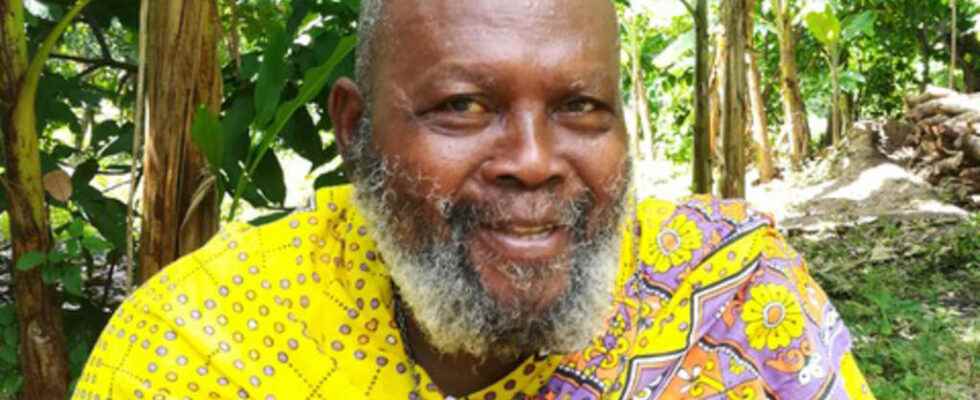Sunday, February 5, in Madagascar, the memory of an entire people is gone. Paul Jaoravoana, alias Paul Congo, breathed his last, after jumping for joy at the Baréa victory goal for 3ᵉ place in the CHAN. Something to add a final touch of magic to the legendary journey of this humble, simple man, whose voice and stories have rocked so many Malagasy people. Testimonials from people whose meeting with Paul Congo marked their lives forever.
With our correspondent in Antananarivo, Sarah Tetaud
Archivist, contemporary griot, guardian of the oral traditions of the north of the island, Paul Congo has worked tirelessly to preserve this threatened intangible heritage. The body of the septuagenarian was buried Tuesday, February 8 at the family tomb, in the small rural town of Antsakoamanondro, near Ambanja.
Paul Congo left to find the stars he had told so many stories about, leaving behind him thousands of orphans. Like Griotte, Malagasy-Reunion artist and author, who lost her guide, the one who had pushed her to enter the spiritual world.
“ Paul was really the first person who introduced me to Malagasy culture. He had a very strong connection to everything that is spiritual, Malagasy traditions. He said to me “come, I’ll show you the kalanoro” [petits êtres magiques des forêts, ndlr]he had no doubt. »
After having embraced a career as a cultural collector, Paul Congo liked to give back to as many people as possible.
“ He never said to himself “it’s mine and I’ll keep it to myself”. On the contrary. For Paul, it was really important to share and keep alive the Malagasy oral tradition. adds Griot.
Mentor, Paul Congo was also for the choreographer and professor of art and culture at the University of Diego Suarez, Cerveau Kotoson.
” We called him Papa Congo. He always believed that storytelling is part of oraliture. Therefore, what is spoken must remain spoken. And what is in writing must remain in writing. Congo was a great author of tales that he never wanted to write. Of the hundreds of tales he created, he never wanted to put them down on paper. But he didn’t prevent the others from doing it… He happened to tell stories standing up, miming, in his storyteller’s soubaya outfit, with his sacred storyteller’s stick. He also happened to be seated. But even seated and motionless, he had a presence and an aura that penetrated his audience.. »
A very large audience who will have been able, for two decades, to drink in his sakalava-antakarana tales declaimed during his weekly program on national radio.
For Bristowe Willison, Regional Director of Communication and Culture for the Diana region, “ his departure is a huge loss. We are losing one of the pillars and one of the finest connoisseurs of our northern culture. »
